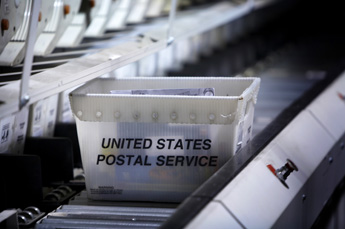
At the end of June, the Postal Service had total assets of $22.5 billion and total liabilities of $61.2 billion. Of those assets only $3.1 billion is available in cash. The USPS has borrowed its mandated limit of $15 billion and currently has enough cash on hand to fund operations for just 11 days.
The USPS will fail to make its $5.6 billion payment to its retirees’ health fund on September 30 and will add that total to the $11.1 billion it failed to pay last year. If it makes its scheduled $1.4 billion workers’ compensation payment next month. its cash balance will total just five days of operating expenses. As Donahoe noted, that is a “razor thin margin” considering that private sector companies typically have enough cash on hand to fund at least two months of operations.
For the first nine months of 2013, the USPS posted a net loss of $3.9 billion. In fiscal year 2012 the net loss totaled $15.9 billion, in addition to the missed $11.1 billion payment for retiree health benefits.
The Postal Service’s biggest problem, though Donahoe doesn’t say it directly, is the congressionally mandated pre-funding payments to the retirees’ health benefit fund. The USPS has run a deficit of $41 billion in the six years since the pre-funding requirement was passed. Of that total, $32 billion has gone to the pre-funding payments. Donahoe said:
To be clear, the Postal Service does not have the authority or the tools to managed these massive obligations without comprehensive postal reform legislation.
Congress either has not acted on or rejected proposals to eliminate Saturday mail delivery, raise postal rates and close some rural post offices. Eliminating the pre-funding requirement would help ease the cash crunch substantially, but that is not likely to happen. More likely are added calls to privatize the Postal Service as the United Kingdom is about to do.
Get Ready To Retire (Sponsored)
Start by taking a quick retirement quiz from SmartAsset that will match you with up to 3 financial advisors that serve your area and beyond in 5 minutes, or less.
Each advisor has been vetted by SmartAsset and is held to a fiduciary standard to act in your best interests.
Here’s how it works:
1. Answer SmartAsset advisor match quiz
2. Review your pre-screened matches at your leisure. Check out the advisors’ profiles.
3. Speak with advisors at no cost to you. Have an introductory call on the phone or introduction in person and choose whom to work with in the future
Get started right here.
Thank you for reading! Have some feedback for us?
Contact the 24/7 Wall St. editorial team.


